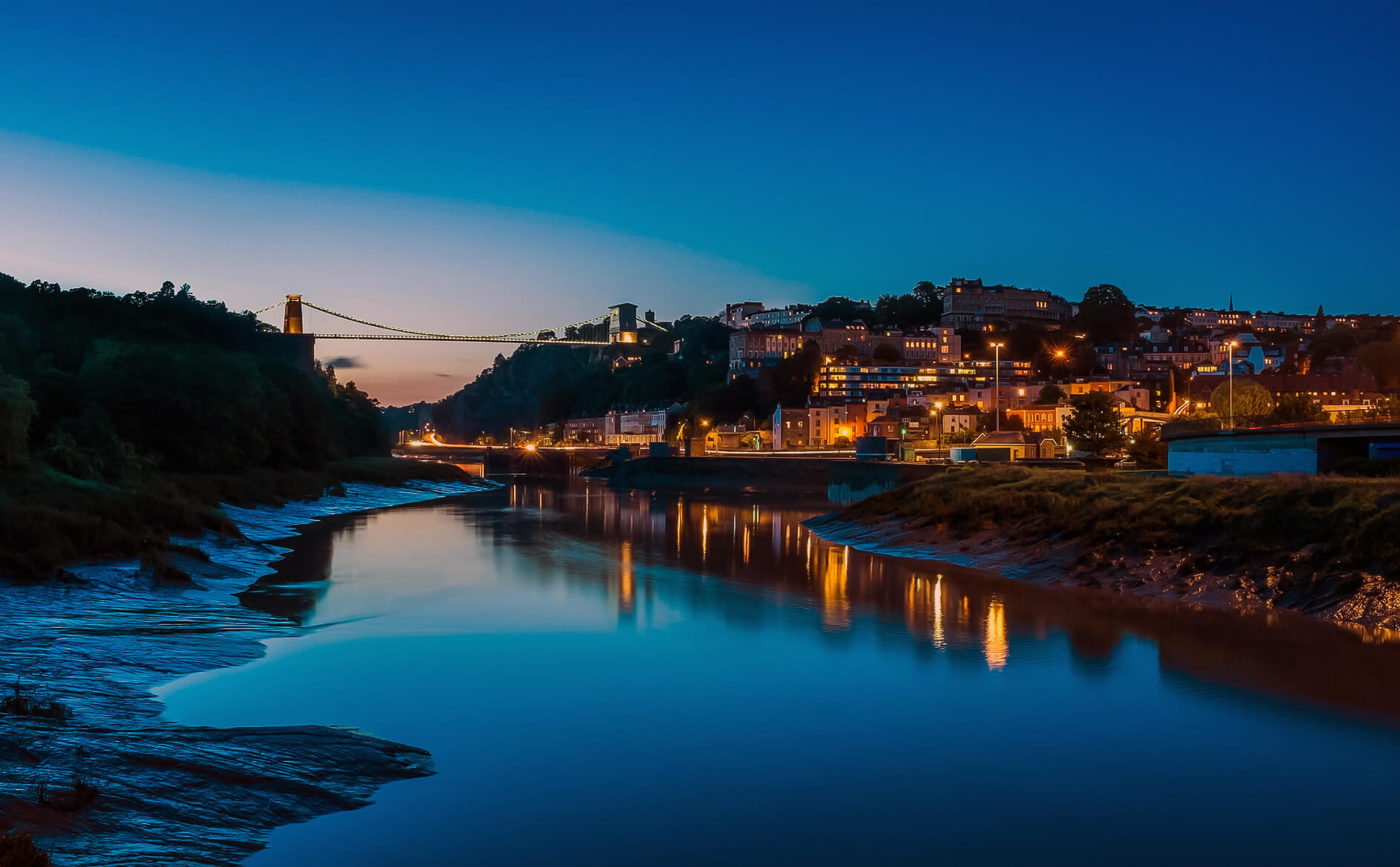Bristol is the unofficial capital of England’s West Country. It is known for its nautical heritage, but it also has a wide choice of attractions, hotels, bars, and events. According to data from 2008, Bristol ranks fourth among England’s top tourist attractions, and the ideal time to come is during the summer, when the city hosts major events.
Bristol is an amiable, grooved, laid back city whose mellow vibe is reflected in the superb music of Massive Attack, Portishead, and Tricky, particularly the Massive Attack track “Lately” (from their brilliant debut album “Blue Lines”), which perfectly captures the sultry, lean burn atmosphere of a warm summer’s evening in this historic and cultured city.
Although it is frequently overlooked as a tourist destination, Bristol has much to offer on its own and is an excellent base for exploring the West Country, with reasonably priced lodging compared to some of the main ‘tourist traps’ (such as nearby Bath) and a diverse range of bars, restaurants, and shops. It is one of England’s most culturally lively cities, with a diverse range of visual and performing arts, theatre, specialty shopping, and live music.
Young people have flocked to Bristol in recent years because of the city’s stunning and brilliant music scene, with bands like Massive Attack, Portishead, Tricky, and Roni Size contributing some of the most outstanding back catalogues of albums in British music history – not bad for a city that was considered a backwater of the British music scene even in the early 1980s. Bristol was rated Britain’s most musical city in 2010. Massive Attack’s majestic opus “Blue Lines,” which contained the soaring “Unfinished Sympathy” and social critiques such as “Safe From Harm” and “Daydreaming,” cemented the triumph of the Bristol music scene in 1991. Parts of “Blue Lines” were recorded at the Coach House studios in Clifton, Bristol (now sadly defunct). “Blue Lines” – notably the tune “Lately” – captures the ambiance and feel of a certain place like no other album in British music. With Shara Nelson’s vocals and a bass rhythm sample from Lowrell’s “Mellow mellow straight on,” this tune so perfectly depicts the ambiance of a summer’s evening in Bristol – notably on the Clifton Downs – that it’s nearly a hallmark song for the whole city.
ORIENTATION
Bristol is a big city with a lot of different locations in the center; a map can assist you figure out where everything is. This is when the free map from the Tourist Information Centre at the Harbourside comes in handy. The Floating Harbour is a length of water that snakes its way through Bristol’s heart, seeming like a river in sections but really being a dock. Ships stopped in the Floating Harbour for centuries, bringing commerce and wealth to the city. It was built in the early 1800s by diverting the River Avon to the New Cut to the south and utilizing numerous locks to create a non-tidal pier. The Floating Harbour is now mostly used for leisure, pleasure vessels, premium waterfront residences, and the odd visiting sailing ship, as opposed to industrial ships.
It’s best to conceive about city areas in terms of their proximity to The Centre, or Central Promenade (it’s named “The Centre” since it used to be known as the “Trams Centre” until the tram system in Bristol was destroyed in the 1940s due to bomb damage). It’s now more of a bus terminal.) The Centre is a large boulevard featuring fountains, trees, stores, and traffic that runs north-south and ends with the Floating Harbour. The Centre is a significant bus interchange for most city bus lines; you may ask a bus driver for a ticket to “The Centre” and you’ll be taken back there.
The Old City, located to the east of The Centre, is the heart of old Bristol. Queen Square, King Street, Baldwin Street, and Corn Street are among the city’s main thoroughfares. It boasts beautiful Victorian and Georgian architecture, as well as old and picturesque taverns and a variety of shops, bars, and restaurants. Broadmead, centered on the Broadmead itself and adjoining streets like as the Horsefair, Union Street, and Penn Street, as well as the Galleries retail mall, is located to the north-east of the Old City. The big new retail mall at Cabot Circus, as well as a connected development of additional boutique stores at Quakers Friars, are located towards the east end of the Broadmead. Going east of Cabot Circus and across the dual carriageway leads to the less wealthy Old Market neighborhood, while going north leads to the St. Paul’s neighborhood, which is a cultural hotspot but best explored during the day.
The city’s hospitals, the bus station on Marlborough Street, and the University of Bristol are all located to the north of The Centre.
To the west of The Centre lies the Harbourside neighborhood, which includes elements of what was formerly known as Canon’s Reach and has been undergoing extensive urban reconstruction since 2000. Eateries in converted warehouses, Millennium Square with attractions like At-Bristol, and offices and sophisticated flats in new constructions can all be found here. It’s a fantastic spot for spending time by the sea. It continues south of the Floating Harbour to the M Shed, a museum of Bristol life, and then to the SS Great Britain.
To the north-west of The Centre, up Park Street, you’ll find the West End, which has smart independent shops, the City Museum, and other attractions, and if you continue along Queen’s Road, you’ll find the upmarket Clifton neighborhood, which is known for its suspension bridge and elegant Georgian architecture.
The Tourist Information Centre is located in the Watershed, a converted warehouse located immediately off The Centre on the west side of the Floating Harbour’s inlet (St. Augustine’s Reach). Walking south through The Centre, turn right at the pier and walk under the colonnade. The Tourist Information Center is a short distance away.


